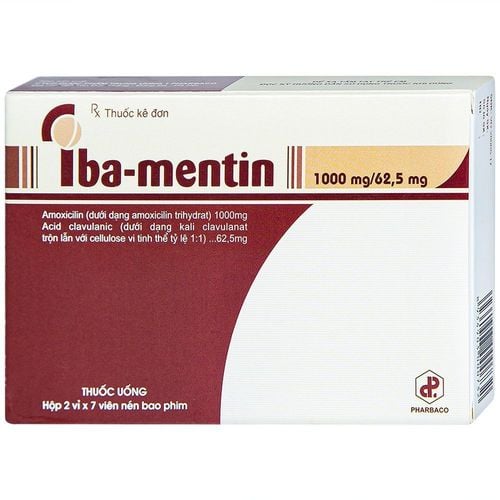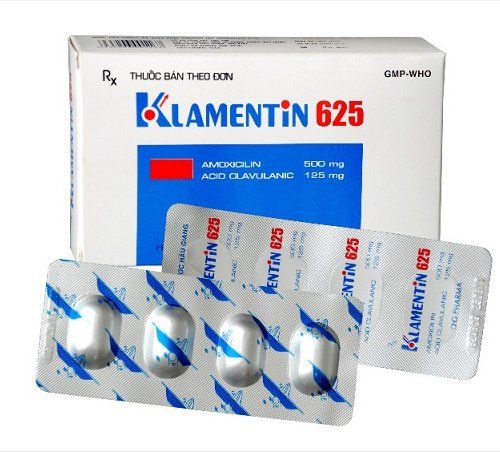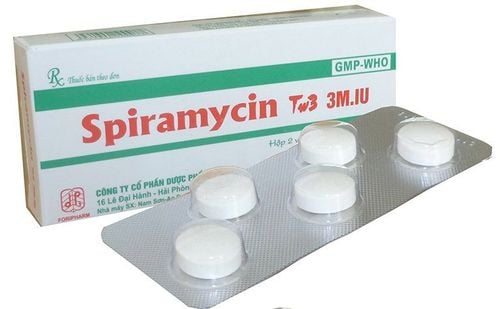This is an automatically translated article.
Different antibiotics will be used in different infections to suit the type of bacteria they can kill. So with antibiotic V-prox 200, how does the drug work, how should V-prox 200 be used to achieve good results.1. Uses of V-Prox 200
Before coming to the use of V-prox 200, let's briefly learn about V-prox 200. V-prox 200 is the brand name of the antibiotic Cefpodoxime - a 3rd generation Cephalosporin antibiotic, used in Treatment of infections caused by susceptible bacteria.
The drug is prepared in the form of film-coated tablets, each V-prox 200 tablet contains the following ingredients: Cefpodoxime proxetil equivalent to 200mg of Cefpodoxime and some excipients (Anhydrous colloidal silica, Sodium lauryl sulphate, Magnesium stearate, Cellulose vi). crystals, talc,...)
Cefpodoxime has a broad spectrum of antibacterial activity against both gram-negative and gram-positive bacteria, along with its high stability against beta-lactamase enzymes secreted by these bacteria, so it should be used therapeutically. Relatively common treatment:
Compared with 1st and 2nd generation Cephalosporins, Cefpodoxime has a broader antibacterial spectrum against aerobic gram-negative bacteria. Cefpodoxime is also active against gram-negative and gram-positive bacilli, gram-negative cocci, . In principle, Cefpodoxime is active against gram-positive cocci such as Streptococcus groups A, B, C, G, Streptococcus pneumoniae, Staphylococcus aureus, S. Epidermidis with or without beta-lactamase secretion. However, there are bacteria that are already resistant to drugs and cannot use cefpodoxime, such as:
Methicillin-resistant Staphylococcus aureus (MRSA). This type of antibiotic resistance is increasing in Vietnam. Cefpodoxime has little effect on Enterobacter spp., Serratia marcesens, Proteus vulgaris, Clostridium perfringens. These bacteria are sometimes resistant to drugs. Methicillin-resistant Staphylococcus aureus, Staphylococcus saprophyticus, Pseudomonas aeruginosa, Enterococcus faecalis, Pseudomonas spp., Bacteroides fragilis, Clostridioides difficile, Listeria sp., Mycoplasma pneumoniae, Chlamydia and Legionella pneumophila are often resistant to Cephalosporins. V-prox 200 has a bactericidal effect by binding to the PBP protein involved in bacterial cell wall synthesis, leading to inhibition of cell wall biosynthesis.
V-prox 200 is indicated for use in the following cases:
Upper respiratory tract infections caused by organisms susceptible to Cefpodoxime, including sinusitis. In tonsillitis and pharyngitis V-prox 200 is a reserve antibiotic reserved for recurrent or chronic infections, or infections in which microorganisms are known or suspected to be resistant to conventional antibiotics. . Lower respiratory tract infections caused by microorganisms sensitive to Cefpodoxime include acute or recurrent bronchitis, or exacerbation of chronic bronchitis, bacterial pneumonia. Upper and lower urinary tract infections caused by organisms susceptible to cefpodoxime include acute pyelonephritis, cystitis. Skin and soft tissue infections caused by organisms susceptible to Cefpodoxime such as cellulitis, abscesses, hair follicles, boils, wound infections, periungitis, ulcers, toxic boils. Uncomplicated gonorrhea. In addition, V-prox 200 may not be safe if you:
Are pregnant or breast-feeding Allergy to any type of Penicillin History of kidney disease, urinary disorders Gastrointestinal disorders The drug should not be used in children under 2 months of age.
2. How to use V-prox 200?
V-prox 200 is taken by mouth, usually every 12 hours or as directed by your doctor. Take V prox 200 with food to help increase its absorption. Dosage is based on medical condition and response to medication. In children, the dose is calculated based on weight.
Medicines that reduce stomach acid (such as PPIs, H2 blockers, antacids) can decrease the absorption of Cefpodoxime making it work less well. Ask your doctor or pharmacist how to safely use PPIs and H2 blockers when used with Cefpodoxime. If you take an antacid, take your antacid at least 2 hours before or 2 hours after you take V prox 200.
Continue taking this medicine until the prescribed amount is used up, even if symptoms have quickly disappeared after a few days. The infection may return if the medication is stopped too soon.
Tell your doctor if symptoms do not improve or get worse.
This medicine is not for use in people who are allergic to Cefpodoxime proxetil or other Cephalosporins, tell your doctor if you have a history of allergy to them or to any of the other ingredients of V-prox 200.
Overdose of V-prox 200 can cause symptoms such as: nausea, vomiting, stomach pain, diarrhea. Seek emergency medical help for assistance. If you miss a dose, take it as soon as possible, skip the missed dose of V-prox 200 if it is almost time for your next dose. Do not take two doses at the same time.
3. Some side effects of V-prox 200
Common undesirable effects of V prox 200 may include:
Systemic: Headache. Gastrointestinal: Vomiting, nausea, abdominal pain, diarrhea. Allergic reactions: Urticaria, rash, itching. Less common side effects such as:
In the skin: Erythema multiforme. In the liver: hepatitis, transient cholestatic jaundice, liver enzyme disorders. Blood: Eosinophilia, blood disorders. Renal: Reversible interstitial nephritis. Central nervous system: dizziness, confusion, increased tone, increased activity, difficulty sleeping, agitation. This is not a complete list of V prox 200 side effects and others may still occur. Call your doctor for medical advice if you notice any unusual signs while using the medicine.
Please dial HOTLINE for more information or register for an appointment HERE. Download MyVinmec app to make appointments faster and to manage your bookings easily.













